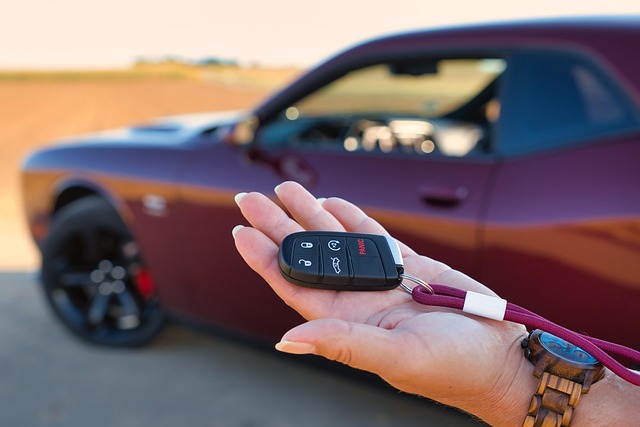Looking to register your car in California? This comprehensive guide walks you through every step, from understanding eligibility requirements to completing the application process at your local DMV. We’ll highlight the importance of gathering necessary documents and even provide tips on using a DMV VIN verifier for accurate verification. By following these steps, you’ll be on your way to securing your vehicle’s registration smoothly and efficiently.
- Understand Eligibility Requirements for Car Registration
- Gather Necessary Documents for Vehicle Registration
- Visit Your Local DMV and Complete Application Process
- Perform VIN Verification Using Official Tools
- Pay Registration Fees and Receive Your Certificate of Registration
Understand Eligibility Requirements for Car Registration

Before you begin the registration process, it’s crucial to understand the eligibility requirements set by the California Department of Motor Vehicles (DMV). To register your car in California, your vehicle must meet specific standards for safety and emissions. One essential step is to ensure that the vehicle’s Vehicle Identification Number (VIN) is verifiable through a reliable source, such as a DMV VIN verifier or a mobile VIN verification service. This process helps confirm the vehicle’s history and ensures it’s not stolen or has any outstanding issues.
Additionally, your car must be insured, and you’ll need to provide proof of insurance when registering. The DMV also requires certain documents, including registration forms, a valid driver’s license, and payment for the registration fee. If you’re using a mobile VIN verifier or conducting a mobile VIN inspection, ensure that all necessary information is accurate and up-to-date to streamline the registration process.
Gather Necessary Documents for Vehicle Registration

Before heading to the California Department of Motor Vehicles (DMV), make sure you have all the essential documents for vehicle registration. This includes your car’s registration certificate from the previous state, a valid driver’s license, proof of insurance, and identification with your current address. Additionally, you’ll need the Vehicle Identification Number (VIN) verification report, which can be obtained through a mobile VIN inspection or by visiting a trusted mechanic for a formal VIN inspection.
The DMV accepts both online and in-person submissions for registration. If choosing the latter, ensure you bring along the aforementioned documents and your car’s title, if applicable. For a smoother process, many individuals opt for a mobile VIN verification service, which allows them to complete the initial steps from the comfort of their homes. This modern approach streamlines the registration process, saving time and effort.
Visit Your Local DMV and Complete Application Process

To begin the registration process for your vehicle in California, start by visiting your local Department of Motor Vehicles (DMV) office. The DMV is responsible for processing vehicle registrations and ensuring compliance with state regulations. At the DMV, you’ll need to complete several steps, including providing necessary documents and passing a vehicle inspection.
During your visit, be prepared to present key documents such as proof of ownership (title), valid identification, and proof of insurance. Additionally, the DMV may require a vin inspection or mobile vin verification to ensure the vehicle’s identity matches the information on file. This process helps maintain the accuracy of the state’s motor vehicle records, enhancing safety and security for all California drivers.
Perform VIN Verification Using Official Tools

Before registering your car in California, it’s crucial to ensure the vehicle’s Vehicle Identification Number (VIN) is legitimate and matches the make and model on record. This step involves performing a VIN verification using official tools provided by the Department of Motor Vehicles (DMV). You can use the DMV’s online vin verifier or download their mobile vin verification app for a convenient, on-the-go inspection.
A mobile vin verifier allows you to quickly validate the VIN’s authenticity and accuracy. This process is essential to prevent fraud and ensure the safety of California roads. By cross-referencing the data with reliable databases, both the DMV’s online tool and mobile apps help determine if there are any issues associated with the vehicle’s history or previous ownership.
Pay Registration Fees and Receive Your Certificate of Registration

After submitting your application, it’s time to pay the registration fees. The California DMV charges a base fee for vehicle registration, plus additional fees based on factors like the age and type of your car. You can usually pay online or in person at a local DMV office. Once you’ve completed the payment, the DMV will process your application and issue your Certificate of Registration.
This certificate is proof that your vehicle is officially registered with the state. It includes important information such as your vehicle’s unique Vehicle Identification Number (VIN), which is crucial for future reference. The DMV may also provide a sticker or placard to display on your vehicle indicating its registration status. Don’t forget to securely store your Certificate of Registration, and consider keeping a digital copy for easy access through the DMV’s online services or mobile VIN verifier apps.
Registering a car in California is a straightforward process once you understand the requirements and gather the necessary documents. By visiting your local DMV, completing the application, and utilizing official tools for VIN verification, you can efficiently ensure your vehicle’s legal status. Remember to pay the registration fees to receive your Certificate of Registration, marking a successful conclusion to this essential task. Don’t forget to consult a dmv vin verifier for accurate and reliable results during the verification process.
